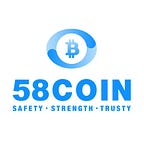White Paper, Miner, Pizza … | “Old Objects” in the Cryptocurrency Museum
Museum has played the role of a time recorder. Talking about bitcoin, more than ten years has passed since the creation of it. Although it is uncomparable to the stock market with a hundred years of history, during the ten years, in the different stages of the development of bitcoin and blockchain have continuously poured in geeks, miners, speculators, newbies, leaving keywords such as sudden rich, myth, scam, belief, revolution, etc.
There are also many “old objects” with stories in the “Museum” of the cryptocurrency realm. On Museum Day, let ’s review the stories brought by these “old objects”.
The First Digital Currency White Paper — Bitcoin White Paper
On Oct. 31, 2008, Satoshi Nakamoto released the Bitcoin white paper — A Peer-to-Peer Electronic Cash System in the cryptographic mail group where he belongs, and Bitcoin was born since then.
A white paper is a document that explains the purpose and technology used in cryptocurrency. Usually a cryptocurrency uses the white paper to help people understand what it provides, and it is also an important information channel for investors to understand a project. Therefore, the level of the white paper affects people’s confidence towards the coin.
In a word, in the cryptocurrency and blockchain industry, the value of a white paper is equivalent to that of a standard financing speech. The white paper plays a vital role in this emerging market.
The First Public Bitcoin-Physical Transaction — Pizza
Since Satoshi Nakamoto mined the Bitcoin genesis block on January 3, 2009, Bitcoin has only been spread among the small crowd and has not realized its value.
Not until May 22, 2010, Bitcoin enthusiast “Laszlo Hanyecz” bought a pizza coupon worth $25 with 10,000 bitcoins. This is the first public bitcoin-physical transaction. Bitcoin has its price with 0.3 cents per bitcoin.
This day has also become the famous “Bitcoin Pizza Day” in Bitcoin history. Bitcoin as the imagination of the financial system has more practical significance. The tenth anniversary is coming. How will you commemorate it? Will you buy a pizza?
The First Digital Asset Exchange — Bitcoinmarket.com
After the birth of Bitcoin, in addition to mining, the only way to get Bitcoin in the early days was to conduct transactions on forums or IRC (commonly known as Internet Relay Chat). However, this method involves both long transaction time and great security risk.
In March 2010, the first digital asset exchange — Bitcoinmarket.com launched. However, due to lack of liquidity and transaction depth, it disappeared soon after its establishment, but Bitcoinmarket.com opened the era of the operation of the cryptocurrency realm exchange 1.0.
On June 9, 2011, China’s first Bitcoin exchange — Bitcoin China (BTCChina) launched. Its founder, Yang Linke, translated Bitcoin into Chinese “比特币” for the first time. In 2013, China’s bitcoin trading entered the golden age, and exchanges sprung up. China monopolized more than 90% of the world’s bitcoin transactions. Now, if the top three exchanges Binance, Huobi Global, OKEx are the Exchange 2.0, then the index exchange represented by 58COIN called the 3.0 version, leading the trend.
The First Generation of High-Performance Miner — ASIC Miner
When Satoshi Nakamoto created Bitcoin, the only way to get it is to use computers (including home computers) to mine, mainly relying on the CPU to calculate. However, as the value of digital currencies such as Bitcoin has become higher and higher, mining has become an industry with the competition is getting fiercer, accompanied by increasing difficulty of mining. Therefore, hardware performance competition starts.
In July 2012, the genius Jiang Xinyu (Internet nickname is “Friedcat”) from the junior class of the University of Science and Technology declared at the forum that he could make ASIC miners (chips). As far as mining computing power is concerned, ASICs can be tens of thousands or more higher than the same-generation CPUs and GPUs.
At the beginning of 2013, Zhang Nanqian (Pumpkin Zhang), a suspended doctoral student from the Beijing University of Aeronautics and Astronautics, developed the ASIC miner and named it “Avalon”.
In June 2013, the Friedcat’s miner USB was finally released, and it maintained 20% of the computing power of the entire network.
At the end of 2013, Wu Jihan, used the tens of millions yuan earned from Friedcat through investment, worked together with Jenke group, to develop the Antminer S1. Since then, the miner manufacturer Bitmain began to enter the stage of history.
It is no exaggeration to say that Friedcat and Zhang Nangeng have opened the domestic “mining” era.
The Birthplace of China’s Bitcoin — Garage Coffee
It is not only the “old objects” that record history, but also a place that everyone in the cryptocurrency realm aspires to.
Guo Hongcai once said, “Without no The Garage Café, there will be no cryptocurrency realm today. Since it is a very mysterious place that all waves of people from the café joint together to create today’s digital asset industry.
Indeed, The Garage Café is the world ’s first entrepreneurial-themed coffee shop. It has been legendary since its establishment in 2011. The Garage Cafét is not only the core coordinate on China’s Bitcoin map, but also the birthplace of the Chinese cryptocurrency circle, where digital asset realm tycoons including Guo Hongcai, Zhao Dong, Li Xiaolai, Li Lin have made their ways.
The development of digital currency is only 11 years old. Through these “old objects”, we review the various stories of this wave of technology together, hoping to help you understand the development process of the digital currency field. Meanwhile, I also remind all practitioners to use history as a mirror and forge ahead.
Website: https://www.58ex.com/
Twitter: https://twitter.com/58_coin
Facebook: https://www.facebook.com/coin.58COIN
Telegram: https://t.me/official58
Reddit: https://medium.com/@58coin_blog/
